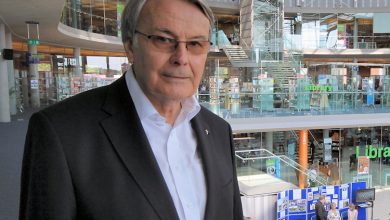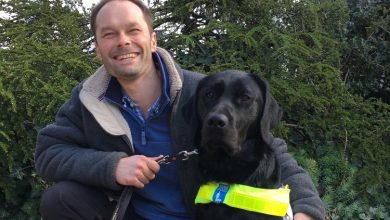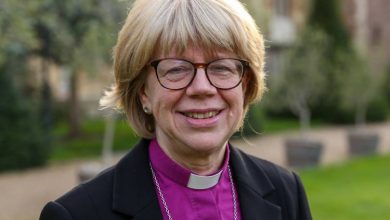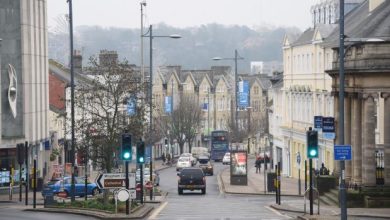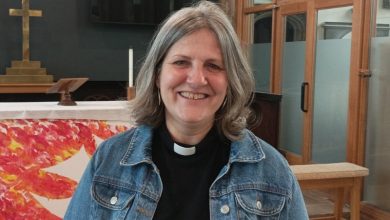Norfolk’s trail-blazing architect awarded MBE
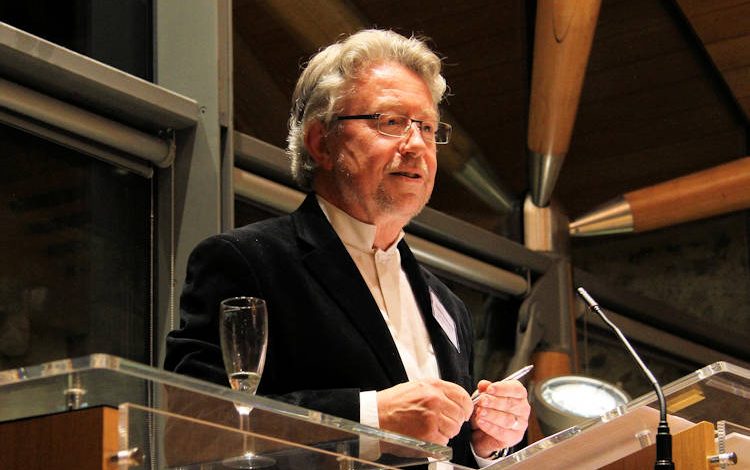
Norfolk-based architect David Thompson was recently awarded an MBE by the Queen for his services to architecture and to the community. He shared something of his rich story with Eldred Willey.
For David, coming to Norwich was an answer to prayer. He had done some solid years of work for BDP, a multi-discipline design practice in Tottenham Court Road, central London. But he was feeling it was time to move on. Should he go north, south, east or west? No idea.
He decided to leave the car at home three days a week and pray as he walked to work from central Islington. After a while he would arrive at work realising he could not remember the walk, so focussed had he been on finding some direction in life.
After keeping this up for eighteen months he had a call out of the blue from a former colleague who had moved to Norwich. He was now working at Lambert Scott and Innes, as it was then called, and asked David if he wanted to come and join him.
David had once caught Norwich on his radar when he and his wife Jackie went to Hethersett Park Farm Hotel to celebrate his fortieth birthday. He remembers saying to her as he drove around the city: “I could live here.”
Still, it was a big decision to uproot, and a sabbatical odyssey to South America was the ideal opportunity to think about it. Also, to see a condor and an albatross in the wild, to cross Lake Titicaca, visit the High Andes and drop in on his cousin who was doing missionary work in Peru. With a bit of determination, he did manage to see some condors. But despite starting his journey with a guided spiritual retreat, he did not get any flashes of revelation, rather a growing realisation that he just needed space and time to take a life-changing step.
Norfolk – and his partnership with Lambert Scott and Innes – provided opportunities to become more actively engaged with the wider community. In particular, he became involved in ProHelp, an alliance of 40 or so companies including lawyers, architects, and fundraisers which offered up to £5,000 of free services as a leg up to good causes. This and other social responsibility commitments led to David becoming the Prince of Wales’ Business Ambassador in the East for a couple of years.
From a professional point of view, a key connection was the Norfolk Wildlife Trust, of which he eventually became chair. He designed for them the now-famous Cley Visitors Centre. Cley was a challenge because of the existing emblematic thatched hut which he had to be careful not to upstage. He found the answer in a ground-hugging, sedum-moss-covered creation, with double curvature on the roof for stability. The design was pioneering from an ecological point of view, with heating from a ground source heat pump, a solar collector for hot water and a wind turbine.
David’s spiritual life, meanwhile, had become ‘a little bit moribund’ as he puts it. It was sparked to life again by an encounter with the charming Hereward Cooke, at that time vicar of St Stephen’s in the city centre. Hereward was coming under fire in the press for a bold partnership with the new Chapelfield shopping development, which involved blazing a trail through the churchyard to the Mall’s front door. David, who knew the development’s director from London days, felt drawn to stand with Hereward. He found at St Stephen’s a pocket-sized and elderly fellowship, packed full of welcome, of prayer and of a sense of purpose. He and his wife stayed for over a decade.
It was certainly a providential move for an architect. After Madeline Light became vicar, the ‘fateful crack’ was discovered at the east end of St Stephen’s, the result of a burst water main underneath. An exodus of the congregation took place, and Madeline took to wondering how she could use the opportunity to re-imagine a city centre church.
It is not that David designed the revamped building, with its popular café, its office and glassed-in meeting room. But his experience helped him to frame the questions for the architect’s brief in such a way that he could already envisage the answers. With the project nearing completion, David served as a churchwarden and saw St Stephen’s become a city-centre community consisting of the passing public and local city workers, as well as a base for clubs and societies, mothers and toddlers’ groups, the homeless – and the church congregation.
In true architect fashion, David is always moving on to the next project. To his great satisfaction, he is finally working on his own property in Costessey. His work at St Stephen’s done, he and his wife have launched into supporting the new young vicar in their village as he sets about revitalising the church and community. He is now working with the group on refurbishing St Helen’s in New Costessey. The journey continues.
Pictured above is David Thompson and, below, the Cley Visitors’ Centre
Eldred Willey, 26/01/2021
Read the full article here




